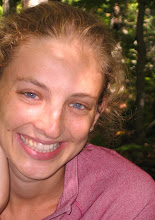 On Wednesday, March 25th, I went to my first ever Whitney Biennial. I arrived at the museum five minutes before opening time, to find that people were already waiting in a line that wrapped around the northwest corner of the museum. To find so many people eagerly awaiting the Biennial’s opening on a Wednesday morning was somewhat surprising, especially as the Biennial had already been open for more than a week. For a while, then, I hoped that the large number of visitors might be due to the great quality of the show within the Whitney. (Later I realized that the Contemporary Art Armory Show opened on the same day, an important factor for the many aficionados coming into town for a week of contemporary art.)
On Wednesday, March 25th, I went to my first ever Whitney Biennial. I arrived at the museum five minutes before opening time, to find that people were already waiting in a line that wrapped around the northwest corner of the museum. To find so many people eagerly awaiting the Biennial’s opening on a Wednesday morning was somewhat surprising, especially as the Biennial had already been open for more than a week. For a while, then, I hoped that the large number of visitors might be due to the great quality of the show within the Whitney. (Later I realized that the Contemporary Art Armory Show opened on the same day, an important factor for the many aficionados coming into town for a week of contemporary art.)While waiting in line, I recognized many foreign languages spoken in the crowd around me. I was reminded of my visit to the New Museum a couple of weeks ago, where the museum itself felt like a great tourist attraction. In fact, the Biennial shares more than an audience with the New Museum’s Unmonumental show. Similarly to Unmonumental, the Biennial’s three floors felt overcrowded with works. On one and, this is understandable: the Biennial seeks to cover new work over the past two years in a relatively small space. On the other hand, however, the pieces are distributed in a chaotic and overlapping way. Maybe that is part of the design: an attempt to represent in the art, as well as on the museum’s floors, the pervading experience of over stimulation and multi tasking, an experience the defines part of 21st century existence.
Overall, the Biennial presents a wide range of artists working with different media. Next to a window on the fourth floor, Phoebe Washburn’s While Enhancing a diminishing Deep Down Thirst, the Juice Broke Loose (the Birth of Soda Shop) (2008) recreates a surreal greenhouse/soda shop, in which bunches of daisies are fed Gatorade, while flower bulbs grow among golf balls. Next door to Washburn’s piece, Natalia Almeda’s Al Otro Lado (To The Other Side) (2005) is projected in a dark room, taking turns with films by other artists. The 66 minute documentary about drug dealers in Mexican culture offers an interesting perspective on the way dealers are glorified as heroes and martyrs within their communities. On the same floor, Heather Rowe’s Something crossed the mind (unembellished three times) (2008) creates a hypnotizing experience for the viewer. Using mirrors facing different angles and alternating wooden planks with empty space, Rowe creates a game of light, perception and reflection that is at once playful and disorienting. James Welling’s Torsos (2008) series reminds us of the important question of the unique for photography in an age of digital art. Welling uses photograms to create imperfect images that document the single event of the photograph. His Torsos focus on the bodily forms suggested by netting to create images that defy definition of form, but that simultaneously feel familiar and recognizable.
Throughout the exhibit, the Whitney offers an audio tour with commentary by the artists themselves. I found this an interesting and sometimes funny addition to the experience of the exhibit. In part, turning the artist’s commentary on, helps turn the visitors’ voices off. Furthermore, each artist approaches theur work differently. While some merely describe the process and concept behind their work, others use the audio commentary as an additional tool to contextualize their piece. Daniel Joseph Martinez, for instance, performs something like a manifesto for his Divine Violence (2007). The work, which has been smartly placed in a room of its own, consists of about 50 golden canvases about 1’x 2’, each one defined by the name of a guerilla movement written in black font reminiscent of comic books. Entering Martinez’s room while listening to his aural manifesto temporarily isolates one from the over stimulation of the other rooms and effectively narrows one’s focus to Martinez’s critical perspective.
Overall, the 2008 Whitney Biennial brings together artists of different sensibilities and political views in a very ambitious exhibition. Admirably, the Whitney has commissioned a lot of the works on show, giving artists as well as viewers a chance to see something new. With its expansion to the Armory for more performance based works, the Whitney is calling out for more room for its biennial exhibition. Could it be that, in the future, we will witness a Biennial that spreads all over New York? Something more similar to the way Performa organizes its biennial? The crowded floors of the Whitney demand a better space for the art work, let’s hope 2010 will bring more breathing room for art and visitors!
Whitney Museum of American Art
www.whitney.org
Through June 1

No comments:
Post a Comment